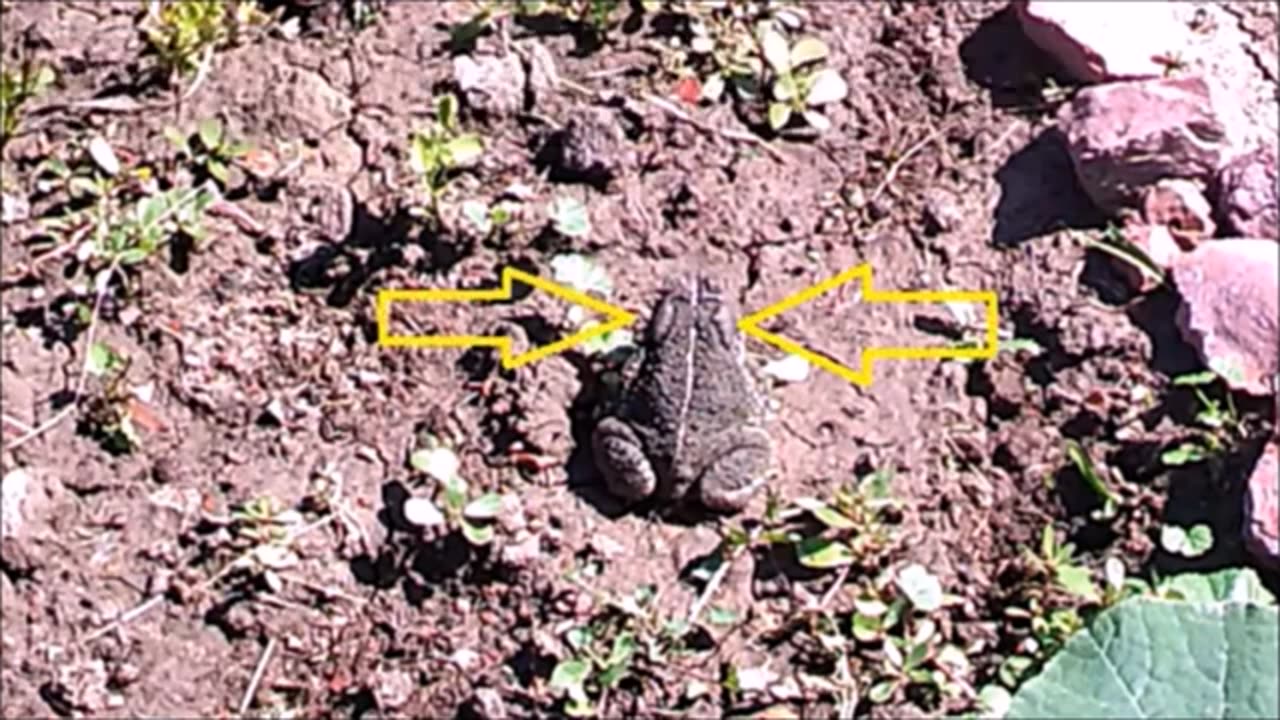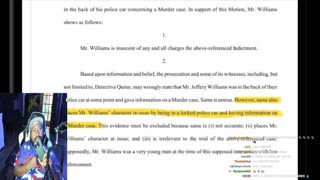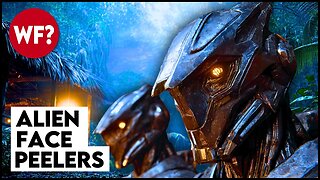Premium Only Content

12 Toads - Plentiful Population This Season or Unrecognized Amphibian Invasion
Conditions must have been right for a LOT of toads to hatch this year. Unless this is normal, not some lame horror movie invasion. I'd say at least a dozen this time, the small ones near cabin and garden. Below is an excerpt from the online Montana Field Guide.
"JUVENILES AND ADULTS
Except for small metamorphs, parallel cranial crests are found on the snout and behind the eyes in the shape of an “L”. Large parotid glands are present behind the eyes. The post-orbital crests typically touch the paratoid glands. If a lump is present on the snout, it does not extend back between the eyes.
Very young transformed toads typically lack the dorsal line and often have reddish warts. Adults have dry skin with small warts and each hind foot has two dark digging ‘spades’ on their soles. A white stripe extends down the center of the back on adults and is surrounded by a green and creamy-yellowish mottling with greener toward the center line and creamier yellow toward the lateral surface. Usually completely white ventrally, but some black spotting may be present (Bragg 1940b, Maxell et al. 2009). Snout-vent length (SVL) of adults is 63.5-127 mm (Smith 1934, Underhill 1960).
VOICE:
Calls are loud and can carry over a distance of 800 meters (approximately 2,625 feet) (Bryce Maxell, personal communication). Calls are high-pitched nasal "waaaaaaaaah" that sounds lie a crying baby, lasting 2-10 seconds and repeated regularly or irregularly (Werner et al. 2004).
Diagnostic Characteristics
See the geographic range of Western Toad (Anaxyrus boreas) for possible areas of overlap. Adults of the Western Toad lack cranial crests and are rarely found in areas far from forests. The Canadian toad (Anaxyrus hemiophrys), if present, is likely to only occur in the extreme northeast corner of the state and has a lump between the eyes and frequently has the paratoid gland separate from the post-orbital crest, which is often broken.
Although overlap in habitat use exists the Great Plains Toad (Anaxyrus cognatus) is more commonly associated with heavier soils in upland habitats (Timken and Dunlap 1965). Adults of the Great Plains Toad have a raised shield on the tip of the snout and the cranial crests between their eyes diverge to form a “V”. The Great Plains Toad has large, white-bordered, dark dorsal blotches. Metamorphs of the Great Plains Toad have large paired dorsal blotches."
-
 DVR
DVR
TimcastIRL
3 hours agoCorporate Press Refuses To Mention Minneapolis Shooter Was Trans | Timcast IRL
143K63 -
 LIVE
LIVE
Akademiks
2 hours agoWar in RAT-LANTA. Young Thug vs Gunna vs Ralo vs YSL MONDO. Who Will Le Bebe Pick. FINAL CRASHOUT!
2,064 watching -
 DVR
DVR
Man in America
6 hours agoThe Final Battle: Nanotech, Transhumanism & the War for Your Soul w/ Dr. Ed Group
7.74K1 -
 LIVE
LIVE
Sarah Westall
1 hour agoUpcoming World Wide Economic Collapse/Deep Recession & What the Big Money is Doing w/ Ed Dowd
471 watching -
 LIVE
LIVE
Barry Cunningham
2 hours agoIT'S MOVIE NIGHT WITH BARRY!
4,141 watching -
 31:05
31:05
The Why Files
2 days agoPeru's Most Terrifying Mystery | The Face Peelers
20.1K40 -
 1:32
1:32
Gaming on Rumble
10 hours agoWhat is the Rumble Creator Program?!?! | Lvl UP
12.4K4 -
 LIVE
LIVE
Flyover Conservatives
22 hours ago9/11 on Steroids: What’s Coming This Fall? - Bo Polny | FOC Show
807 watching -
 1:01:28
1:01:28
Precision Rifle Network
7 hours agoS4E27 Guns & Grub - Let's Talk About Gas Guns
5.65K1 -
 59:29
59:29
The Charlie Kirk Show
3 hours agoTHOUGHTCRIME Ep. 96 — The Great Flag Burning Debate
32.2K23